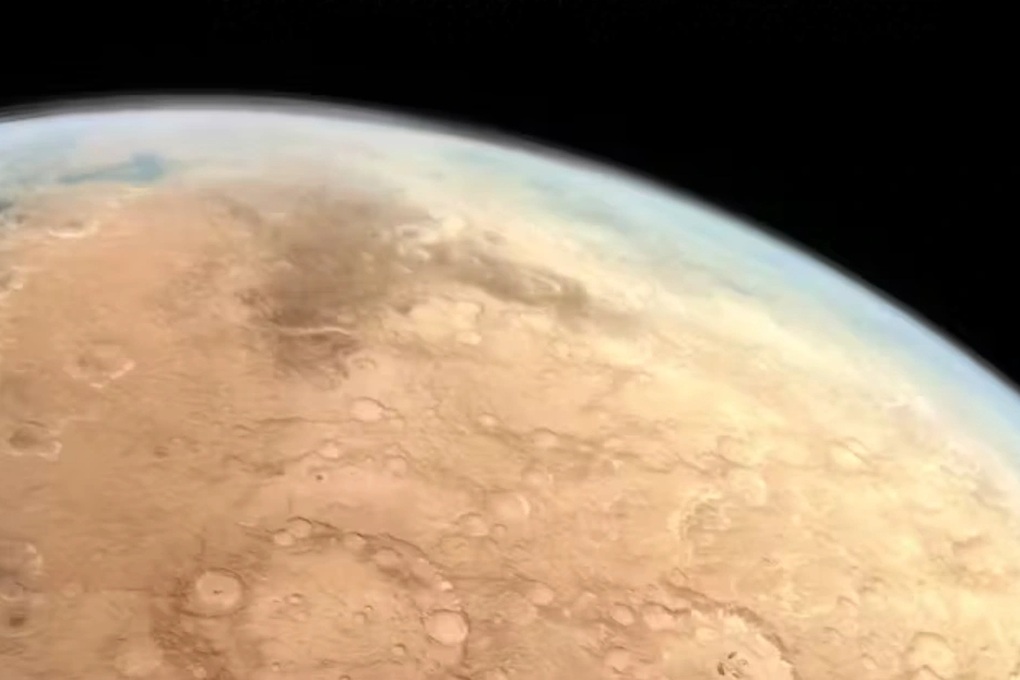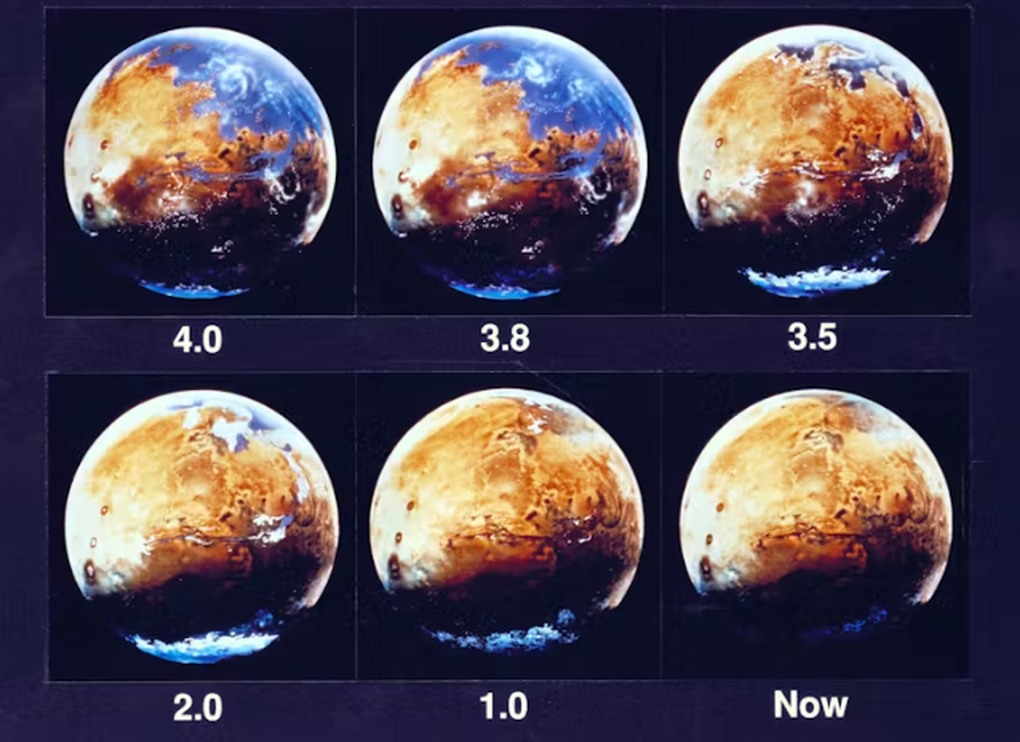Unexpected discovery from a depth of 8 km

Photo of Cassini crater on Mars (Photo: NASA).
A new study published in The Conversation by two scientists, Hrvoje Tkalčić and Weijia Sun, is raising great concern among planetary scientists. That is, under the crust of Mars there may exist a giant reservoir of liquid water, "buried" billions of years ago.
The study used data collected by NASA's InSight lander, which launched in 2018 to study the seismic and internal structure of Mars.
First, it is important to understand the concept of shear waves. These are a form of geological vibration that occurs when they are blocked or slowed down when encountering soft material or water underground.
Using seismic waves, especially shear waves, the team discovered an unusual layer 5.4 to 8 km deep below the surface of Mars.
At this layer, the wave speed drops significantly. This is a clear signal that the highly porous material contains liquid water. In other words, the rocks in this layer can act as an underground water reservoir, similar to aquifers on Earth.
Through seismic analysis, scientists have calculated that the area could contain enough water to cover the entire planet in an ocean 520-780 meters deep. This is equivalent to, and even greater than, the amount of water previously estimated to have disappeared from the planet's surface.
This adds an important piece to the long-standing puzzle: Where did the water on Mars go?
Mars: From Wet Planet to Cold Desert

Four billion years ago, Mars may have once hosted a giant ocean. But the surface water has gradually disappeared, leaving only frozen remnants near the poles (Photo: NASA).
Four billion years ago, during the Noachian period, Mars was a wet planet with oceans, rivers, and potential ecosystems.
Satellite and rover imaging studies reveal the presence of ancient river channels, deltas, and erosional traces, providing compelling evidence of the planet's fascinating past.
However, over time, due to the weakening of the magnetic field and the gradual loss of the atmosphere, Mars became colder and drier, and much of the surface water either evaporated into space, froze at the poles, or was bound up in mineral rocks.
Still, hydrological models suggest that there is still an unexplained, colossal amount of water missing, enough to cover the planet in oceans 700-900 meters deep.
The hypothesis proposed by the research team is that a significant portion of this missing water seeped into the ground, fell into cracks created by ancient meteorite impacts, and was then "trapped" in the crust in a liquid state thanks to the higher temperatures deep below - where it is not frozen like the layers near the surface.
This discovery not only helps explain the water loss, but also opens up the possibility of potential life in the Martian soil - similar to Earth's deep microbial ecosystems, which can live in underground water-filled fractured rocks and are not exposed to sunlight.
Source: https://dantri.com.vn/khoa-hoc/phat-hien-dai-duong-bi-chon-vui-ben-trong-sao-hoa-20250512114535424.htm






























































![[Maritime News] More than 80% of global container shipping capacity is in the hands of MSC and major shipping alliances](https://vphoto.vietnam.vn/thumb/402x226/vietnam/resource/IMAGE/2025/7/16/6b4d586c984b4cbf8c5680352b9eaeb0)





































Comment (0)